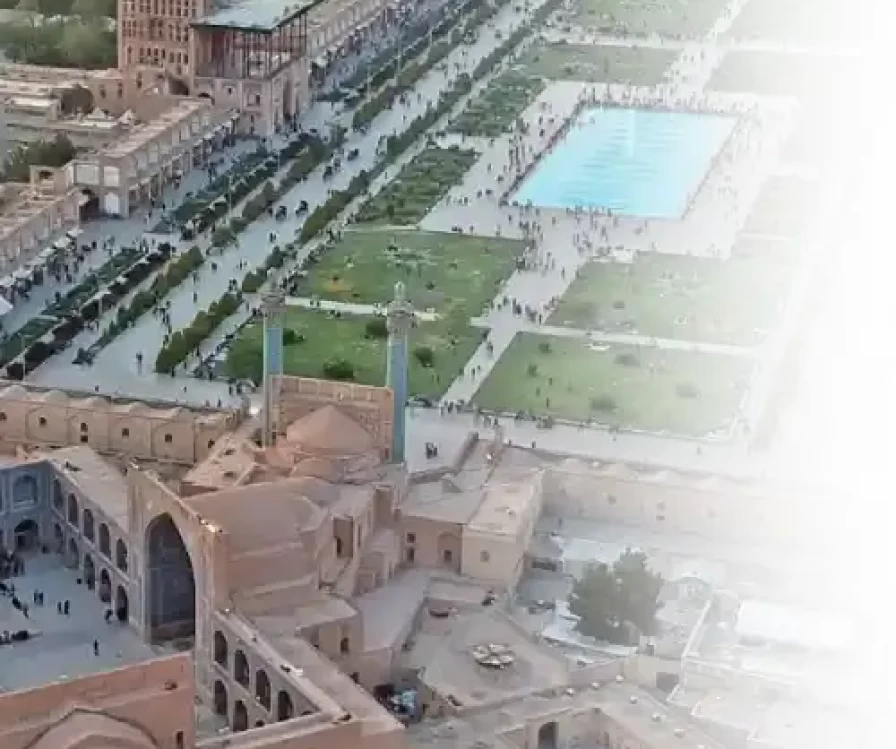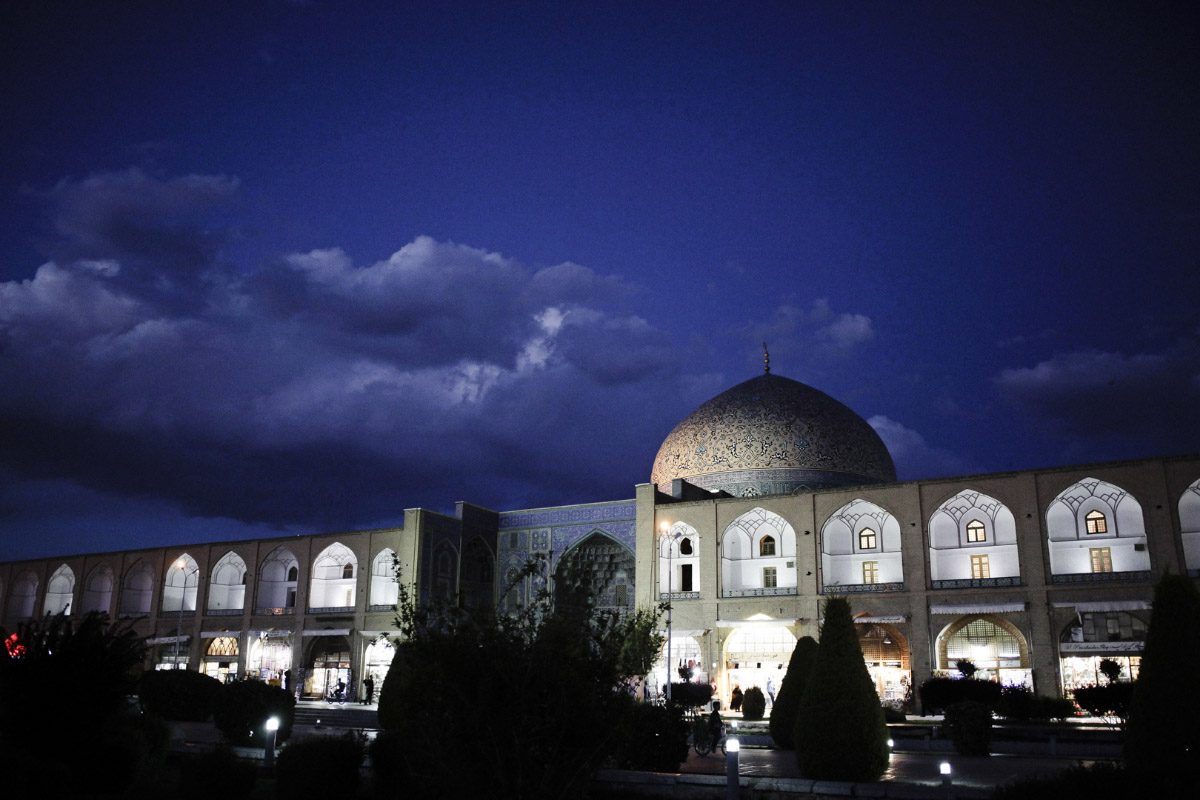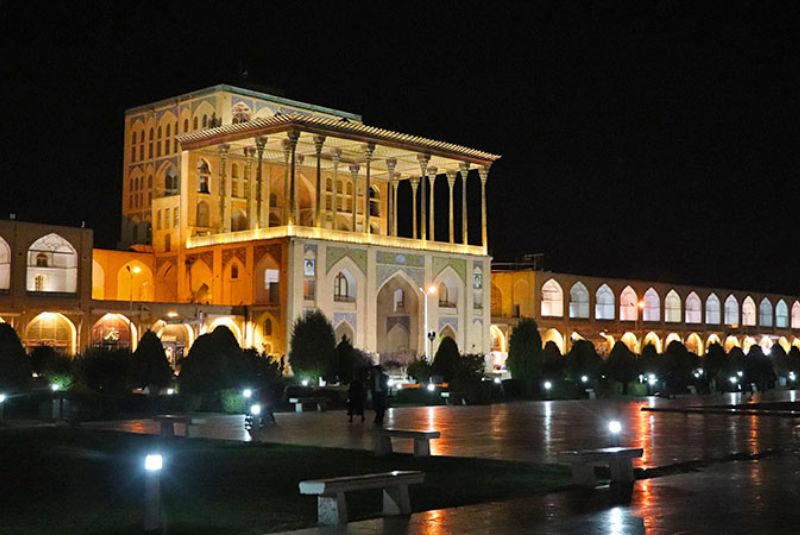
naqsh-e jahan square : architectural masterpiece and gem of Isfahan city





Naqsh Jahan
Naghsh-e Jahan square is like a gem in the center of Isfahan city capital of Isfahan province, its dimension is around 560 meters in length and 160m in width, around the square you can find 200 to stories shops that today the second floor is closed because of security matters. In the north you can find the old bazar Qeysarieh Bazaar and in the south there is imam mosque, one of the most beautiful mosques in Isfahan even in the world. In west side you can find blue mosque, a real gem in isfahan naghsh e jahan square and in the east side, Ali Ghapoo palace, one of the most exquisite structures in Isfahan Naghshe e Jahan square located and flourishing in Naghsh – e Jahan square like a big piece of diamond in night. In old times it was one of the biggest squares in the ancient world and even today even if it is not first in size but a real gem from the aesthetic point of view. Naghshe jahan is a real gem which is a must for tourists visiting Iran.
To understand the naghsh-e jahan square facts you should concentrate on the history and culture of Iranian people. If you concentrate on the detailed forms and structure of Imam square you understand better about the architecture details related to Naghsh-e Jahan square. When you visit Naghshe Jahan square it means you are visiting multiple Isfahan places.
Actually when you are visiting naghsh jahan square it means you are visiting five places, first of all the Naghsh –e Jahan square itself, second, Aali Ghapoo palace, third Qeysarieh Bazaar, fourth blue mosque or Sheikh Lotfollah mosque, and at last the Imam mosque or Allahverdikhan mosque. So visiting the Naghsh – e Jahan square gives you multiple values of isfahan places to visit in one place instead of many places and you do not spend your preciouses time transporting from one site to other sites. In add to your visiting cultural sites you are visiting more than 200 souvenir shops surrounded square and even there are many workshops behind the souvenir shops and you have time to learn about how they are producing souvenirs and handicrafts o Isfahan, you have chance to visit how they make Kalamkar cloth, inlaid or engraving. Above the blue mosque you have one of the best restaurants of Isfahan and it is on the second floor and you can look at the blue mosque dome from close distance and you can taste the best foods of Isfahan, meanwhile you have the chance to look at the square from above. In the square center there is a pool filled by water and you can see the reflection of the sites to the pool and it makes a very interesting double look of the blue mosque and Ali Ghapoo palace. At night it makes a special kind of illusion and it makes a valuable picture of the mosque and surroundings which gives you an unbelievable experience in the few times you have.
Visiting Naqsh-e Jahan square in each season has its own value. But in spring all the trees bloom and give you the best taste and impression of the year. In summer you have another experience as the trees are green and the whole country has the kind of energy that you should experience yourself. In fall you have the chance to visit colorful leaves of trees, this experience is unique and the weather is more pleasant and at last in winter you can have a very special experience which is unique because of the silence and behind any reason the economy of tourists cools down enough that you can pay less than half the price in high season. It is cheaper, all the sites are not crowded so you can spend more time visiting each site in a very silent manner. Personally I prefer this season and I stay more in each site to consider each of them in silence and I have the chance to touch the details.
About this square you can find hundreds of articles and many books but visiting the square itself is a very special experience you should have on your own. But never forget to start your visit from Qeysarieh Bazaar and frost look a long distance from bazaar entrance to Imam mosque (former shah mosque).
I will tell you a secret inside the square which you can check for yourself personally. The ratios of the square are very interesting and copied form size ratios of human size. It means the head of the body is the imam mosque. The foot bears a bazaar and the two hands are a blue mosque and Alighanpoo palace. When you start from the bazaar entrance you can understand the size and location of each site and corners. In the center of the square you can find the pool. a vast full but shallow. This concept is common throughout the country and even in neighbors because of shortage of water. From the other side the pools are lower than the streets around to make a difference between the street level and pool level to let the water from water sources like ditches, Qanats , wells or other water sources. This difference lets water flow from high to low level and fills the pool quickly without using energy. In old times when there was no electricity and water pumps, using this passive energy was crucial to fill the pools in public places.
But in old times there was no pool in center and it was constructed around sixties and seventies that the government constructed this pool and water fountains in center of the square to make more visual effects to the square itself and add more humidity to the atmosphere. Beside that you can see the pool acts like a mirror and you can see the reflection of mosques and other buildings on the water and it adds more beauty to the pool.
As you visit a 400 years old historical place you can touch the modernity of the place too. Naghshe Jahan square today is different from what you could see many years ago. The pool stands in a place which was dedicated to the sport of polo many years ago. Even today you can see stone pillars used as the gate for plowings but after making the pool on the polo field the role of those pillars is not important and even many people miss them visiting the polo field. In old times, in important events they made fireworks in Naghsh –e Jahan square and many people gathered together to watch fireworks and enjoy the manifestations and public festivals.
Above the bazaar there was a place which was named “ Naghare Khane ” or a place to play music and mostly large and long trumpets to remind the people inside and outside the square when they should make prayers. The Safavid dynasty were very conservative in religion and one of the scientists Sheikh Bahayee made a very precise sundial which even today you can find it in Imam mosque and it shows the exact noon in different months of year and by signaling the time to the musicians, they started trumpeting and ask people to attend the mosques and start praying to god. By some complicated calculations the scientists could calculate the other religious time to hint the people start praying in different times. Shia Muslims pray 5 times per day . they start by very early morning, noon and afternoon, evening and night and praying in exact times is very important for the Muslims even today and because in old time nobody had a clock to calculate the time, using this system was very functional and many people especially the bazaries or merchants relied on the timing system of the public signaling system.
Blue mosque is not a real mosque and there were many political and social concerns making a private mosque for the court lived in place. Blue mosque is a very specific mosque made mostly for kings and ministers and all people of court who gathered in blue mosque to negotiate about the country, wars and other occasions in a very religious and secret place without being seen by other people and spies. To facilitate their transfer they made a small tunnel between the blue mosque and the palace to make a good secret channel for the king and other related families to walk through and attend the religious and political meeting in the religious hall. By these acts nobody had doubts to why or when or where the high ranking nobleman attended each other and if they were seen there was no doubt for anybody because they made their normal prayer in a very public place, a mosque. Blue mosque is an exception because it has only one or two minarets. On normal occasions the shia mosques have two minarets and all the Sunnis mosques have one minaret but the blue mosque does not have and this shows this mosque is different from other mosques around the country. Sanapersian looking forward to visiting Isfahan and Naqshe-e Jahan square soon. Do not forget to find us.
Contact Us
+989054577261